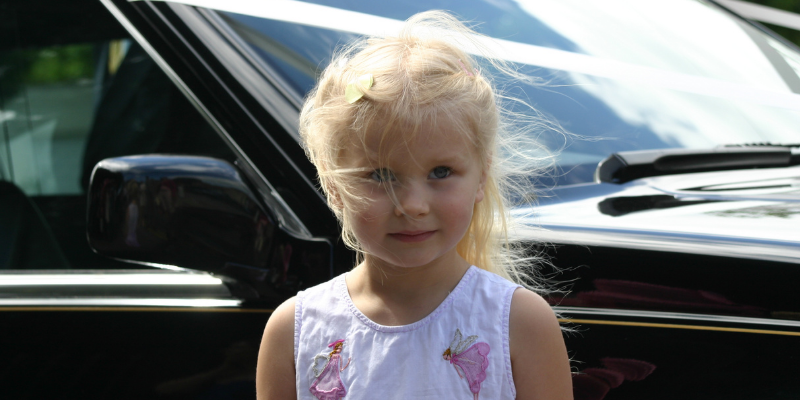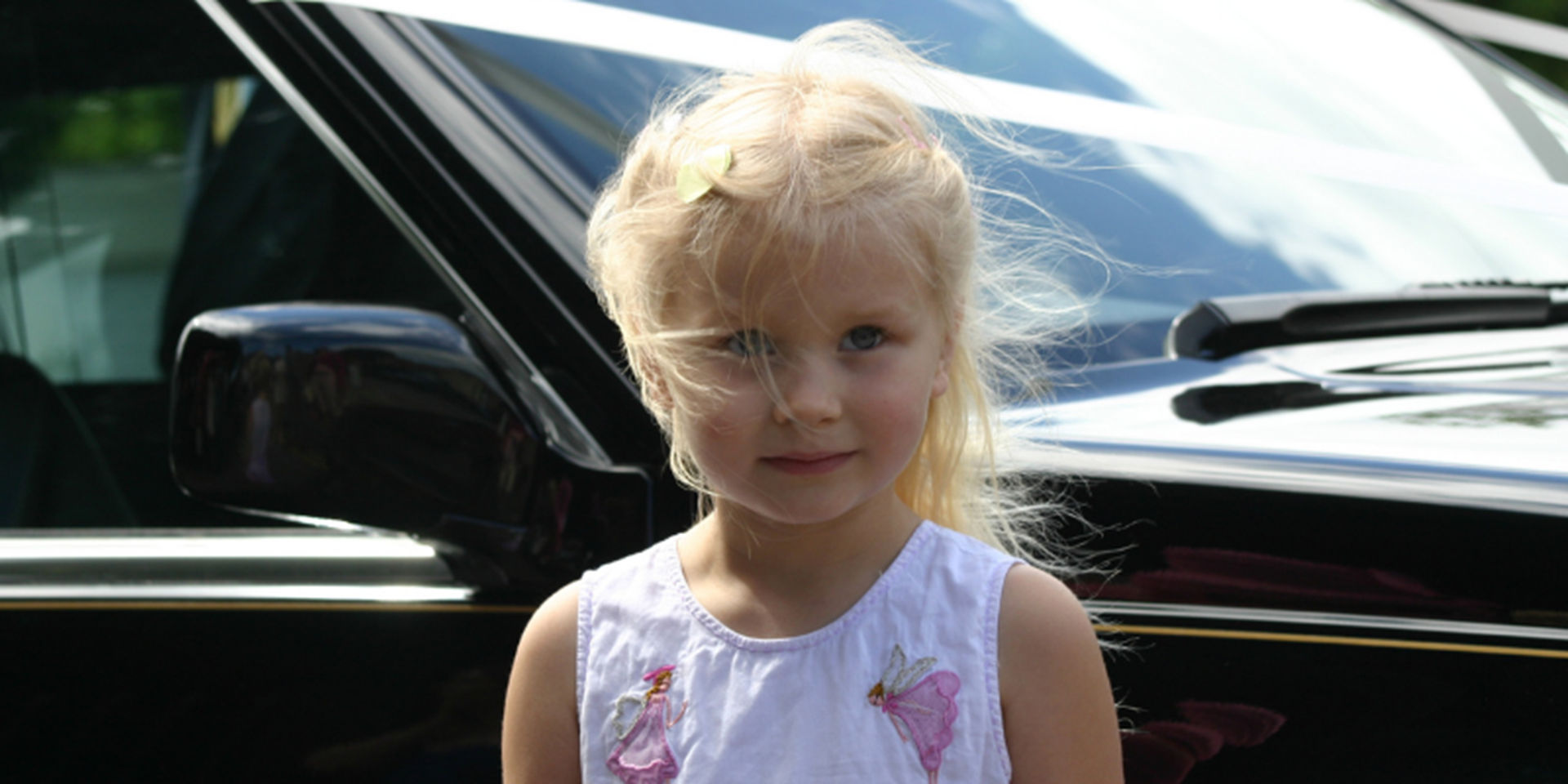
Image: Hannah Tarplee
Hannah was a typical five-year-old in lots of ways. She loved dancing, Disney and having different hairstyles. But there was nothing average about her. She was caring, thoughtful and mature beyond her years. We never suspected there was anything wrong as she had always been a picture of health and was happy and full of joy.
We noticed that sometimes her tummy didn’t look quite symmetrical, but it was subtle and only just noticeable. I thought I might be imagining it.
When she was four and a half, she had complained of a stitch pain in her left side for a few days - it was the same side that we thought looked bigger. So, we took her to the GP to get it checked to put our minds at rest. That’s when our whole world fell apart.
Our lives changed completely
Up until that point Hannah was almost never unwell and didn’t even suffer from the typical childhood bugs and illnesses. The GP immediately referred us to the children’s ward at the local hospital and Hannah was seen by a paediatrician. He could feel a mass of some sort in her abdomen but initially thought it might be an enlarged spleen.
The hospital did an ultrasound scan, and instead of an enlarged spleen, found a tumour on Hannah’s left kidney. We were told that they suspected it was a Wilms tumour. It was so hard to believe because we had what seemed like a completely healthy child in front of us, skipping around in the waiting room. It seemed ludicrous that we were being told that she potentially had cancer.
We were quickly referred to Birmingham Children’s Hospital who confirmed it was a Wilms tumour. Hannah had a biopsy taken, a central line fitted and then treatment started. In the space of a week, our lives had changed completely.
Hannah had to have intensive treatment
A further scan showed suspected nodules in the lung, but it wasn’t confirmed whether it had spread. So, it was treated as a stage four Wilms tumour. Hannah had six weeks of preoperative chemotherapy. Then she had a major operation to remove the affected kidney and some potential lesions on her right kidney.
Once the tumour was removed, they did more tests on it. They found it was a high-risk Wilms tumour with abnormal cells which were hard to treat, meaning that Hannah would have to have even more intensive treatment. She had four weeks of radiotherapy and a long course of chemotherapy. It was horrific.
We expected Hannah to survive
People often forget that there is a person at the end of the diagnosis and treatment. On top of the devastating news of the diagnosis that we had just received, how on earth were we to explain to our bubbly, bouncy girl that she had an illness, and the treatment would make her feel ill and her hair would fall out?
When Hannah lost her hair, we got offered a voucher for an NHS wig. The only ones available at that time were synthetic ones which we really didn’t feel were suitable for a young child. So, we did our own search to find a realistic real hair wig. They weren’t easy to find, and we had to ship one from America at a significant cost. But once Hannah had it, it had a hugely positive effect on her. We thought at the time that if we ever got the opportunity to help others with this in the future when this ordeal was over, then we should. Of course, we never envisaged that Hannah wouldn’t come out the other side.
Towards the end of April, further scans showed the cancer was growing back. It became untreatable and six weeks later Hannah passed away.
Our fundraising in Hannah’s memory
After Hannah died, there wasn’t any intention from us to do anything charity-wise. But her headteacher invited us into the school because the parents, teachers and her friends had raised money in Hannah’s memory. They asked what we’d like done with the money and we realised that it could be put to immediate use by buying a real hair wig for a child going through treatment. So, we contacted the hospital, and did just that.
Word spread and as more people heard what we’d done, we raised more money to fund a couple more wigs. It just snowballed from there. Within a year and with the help of some key people, we’d provided 36 wigs. It was incredible.
We decided to fund cancer research
We registered as a charity, The Little Princess Trust but didn’t think it would have any longevity. But we had incredible support and it seemed to resonate with lots of people. As well as fundraising, people would send us parcels of their own hair to make wigs.
Here we are 18 years later, and it’s grown beyond what we ever could have imagined. It’s unrecognisable from the charity we ran from our kitchen table and headmaster’s office. Now we have headquarters in Hereford with 30 members of staff and a CEO who is responsible for the running of the charity. We have now provided over 15,000 wigs for children and young people.
In 2016, we had found ourselves in the amazing position of being able to provide a wig service to everyone who needed it. So, it made sense to look at what else could be done that would make a difference to children with cancer. This resulted in the scope of the charity being extended to allow us to begin funding research into cancer. At the end of 2016, we opened our first round of research applications working closely with the Children’s Cancer and Leukaemia Group, who help advertise our grants, coordinate funding and foster collaboration.
Find out more about our Family Charity Partners, whose support and dedication drives our work forward.
We’re proud to work with The Institute of Cancer Research
Since 2016, The Little Princess Trust has funded over 125 research projects at many research institutions and we’re very proud of the work we’ve funded with the ICR. We’ve supported the research of Professor Louis Chesler and Dr Alejandra Bruna, who are working to understand the biology of children’s cancers in the hope of developing better treatments. Their work is amazing quality, and the team are so dedicated not just to what they’re doing, but why they do it.
We have supported Professor Janet Shipley in her team’s work to better understand high-risk rhabdomyosarcoma, the most common soft tissue sarcomas in children. We’ve also assisted Dr Paul Huang in his research to optimise therapies for newly diagnosed metastatic Ewing Sarcoma.
Our shared vision with these projects is improving the outcomes for children with cancer. Current treatments aren’t good enough. They do work for many patients, but we want to improve outcomes and clinical practice for everyone. We won’t stop until there isn’t a need for us. It won’t happen overnight, as research takes time. But ultimately, we’re all working towards a future where children don’t die from cancer.”
We are world-leaders in the study of cancer in children, teenagers and young adults and have made the huge strides over the past decade in improving treatment options for children with cancer.
This progress is made possible because of long-term investment in this area of research, including from our supporters and family charity partners.
But treatment options for children remain limited. Your regular donations will help us develop the new, kinder innovative treatments that are urgently needed for children with cancer.
